
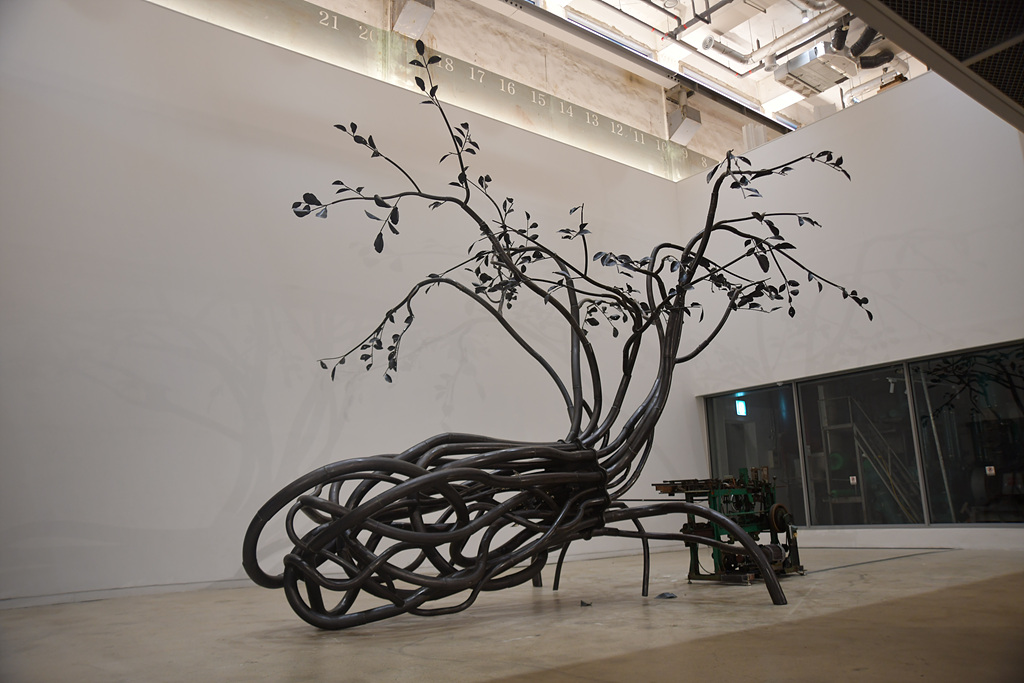
숨쉬는 기계 : Breathing Machine
산업의 기억과 자연의 호흡이 교차하는 예술
숨쉬는 기계는 김진우 작가가 산업과 자연의 경계를 탐구하며 제작한 대표적인 설치 작품이다. 이 작품은 60여 년 동안 경북 의성의 성냥공장에서 실제로 사용되던 기계를 바탕으로 만들어졌다. 단순한 쇳덩이가 아닌, 수많은 사람들의 노동과 시간이 응축된 ‘숨결’을 담은 존재로서, 작가는 이 낡은 기계에 생명력을 불어넣고자 했다. 멈춘 듯 보이는 철제 구조물 속에서 여전히 흐르는 시간과 온도를 읽어내며, 그는 인간, 자연, 산업이 서로의 리듬을 통해 공존할 수 있는 가능성을 제시한다.
멈춘 기계 속에서 살아 있는 시간
김진우에게 숨쉬는 기계는 단순한 산업유산이 아니라, 한 시대의 정서와 인간의 흔적이 스며든 ‘기억의 장소’다. 작가는 산업화의 상징이던 기계를 통해 노동의 리듬, 인간의 손길, 그리고 그 속에서 잊혀진 감정을 다시 불러낸다. “기계는 멈추었지만 그 안의 시간은 여전히 흐르고 있었다”는 작가의 말처럼, 이 작품은 정지된 물체가 아닌, 보이지 않는 에너지의 흐름을 시각화한다. 작품 속 기계는 이제 더 이상 기능적 도구가 아니라, 인간의 경험과 역사를 품은 유기적 존재로 되살아난다.
산업의 흔적과 자연의 호흡이 만나는 지점
숨쉬는 기계는 산업의 잔재 위에 자연의 형상을 덧입히는 조형적 실험이다. 작가는 낡은 철 구조물 사이에 생명적 요소를 결합시켜, 기계가 마치 살아 있는 생명체처럼 ‘숨 쉬는’ 듯한 인상을 준다. 녹슨 톱니와 잎사귀가 한 화면 안에서 공존하고, 인공의 질감과 자연의 유기성이 충돌하면서 새로운 생명성을 만들어낸다. 이러한 결합은 단순한 대비를 넘어, 인간이 만든 산업의 잔재가 자연의 순환 속에서 어떻게 다시 살아날 수 있는지를 보여주는 시각적 은유이기도 하다.
산업사회 이후의 예술적 성찰
김진우 작가의 숨쉬는 기계는 산업화의 시대를 살아온 인간에 대한 조용한 성찰이기도 하다. 과거의 노동은 사라졌지만, 그 흔적은 여전히 기계의 표면과 구조 속에 남아 있다. 작가는 그 잔흔을 지워내기보다, 오히려 그 안에서 예술적 생명을 끌어올린다. 그는 산업의 유산을 해체하고, 그것을 ‘호흡하는 조형물’로 재탄생시킴으로써, 인간과 기술, 자연이 다시 하나로 이어질 수 있음을 제안한다. 작품 속 ‘숨’은 인간의 생명과 기계의 리듬, 그리고 자연의 순환이 서로 맞물리는 상징적 언어로 작동한다.
공존을 향한 예술의 언어
숨쉬는 기계는 결국 ‘공존’에 대한 이야기다. 작가는 산업의 잔해 속에서도 여전히 살아 숨 쉬는 자연의 기운을 포착하며, 인간이 만든 구조물 안에서도 생명이 회복될 수 있음을 보여준다. 기계와 인간이 함께 호흡하는 이 작품은 현대 사회가 잊고 지낸 감각적 균형을 되찾게 한다. 기술 문명 속에서 인간이 다시 생명으로 연결되는 과정, 그것이 바로 김진우가 말하는 예술의 역할이다.
숨쉬는 기계가 던지는 질문
김진우의 숨쉬는 기계는 멈춘 시대의 기계가 다시 호흡을 시작하는 순간을 포착한다. 산업의 기억과 자연의 호흡이 공존하는 그 장면 속에서 우리는 스스로에게 질문하게 된다. “인간과 자연은, 기술과 감성은, 여전히 함께 숨 쉴 수 있을까?” 작가는 이 질문을 통해 우리에게 ‘살아 있는 예술’의 의미를 묻는다. 그것은 과거의 흔적을 복원하는 행위이자, 미래를 위한 생명의 언어를 찾아가는 여정이다.
The Art Where Industrial Memory and Natural Breath Intersect
Breathing Machine is one of Kim Jinwoo’s signature installation works, created through his exploration of the boundary between industry and nature. The piece is based on an actual machine that operated for over sixty years at a match factory in Uiseong, Gyeongbuk, Korea. More than a simple mass of metal, it carries the condensed breath of countless workers and the weight of accumulated time. By reawakening this aged machine, the artist seeks to infuse it with life once again. Within the seemingly motionless structure of iron, he perceives the lingering warmth and the flow of time, suggesting the possibility that humans, nature, and industry might still coexist through a shared rhythm.
Living Time Within a Motionless Machine
For Kim Jinwoo, Breathing Machine is not merely an industrial relic—it is a “place of memory” permeated with the emotions and traces of an era. Through the symbol of the machine, once the emblem of industrialization, he recalls the rhythm of labor, the touch of human hands, and the forgotten sentiments embedded within. As the artist reflects, “The machine had stopped, yet time continued to flow within it.” This statement captures the essence of the work, which visualizes the invisible flow of energy rather than a static object. The machine in the artwork is no longer a functional tool; it is reborn as an organic being containing human experience and history.
Where the Traces of Industry Meet the Breath of Nature
Breathing Machine is a sculptural experiment that overlays the remnants of industry with the forms of nature. The artist integrates organic elements into the aged iron structures, giving the machine the impression of a living organism that seems to breathe. Rusted gears and leaves coexist within a single frame, and the collision between artificial texture and organic vitality creates a new sense of life. This fusion goes beyond mere contrast—it serves as a visual metaphor for how the remnants of human industry can be reborn within the natural cycle.
Artistic Reflection Beyond the Industrial Age
Kim Jinwoo’s Breathing Machine also offers a quiet reflection on the human condition in the post-industrial era. Though the labor of the past has disappeared, its traces remain engraved upon the surface and structure of the machine. Rather than erasing these marks, the artist draws artistic vitality from them. By deconstructing industrial heritage and reimagining it as a “breathing sculpture,” he proposes a renewed connection between humanity, technology, and nature. The “breath” within the work becomes a symbolic language where human life, mechanical rhythm, and natural circulation interlock as one.
The Language of Art Toward Coexistence
Ultimately, Breathing Machine is a story about coexistence. Kim captures the living pulse of nature that continues to breathe even within the remnants of industry, showing that life can still be restored inside structures shaped by human hands. This work, in which the machine and the human breathe together, restores the sensory balance that modern society has forgotten. Within the realm of technological civilization, it is this reconnection to life itself that defines what Kim Jinwoo believes to be the true role of art.
The Question Breathing Machine Asks
In Breathing Machine, Kim Jinwoo captures the moment when a machine of the past begins to breathe again. Within the coexistence of industrial memory and natural breath, we find ourselves confronted with a question: Can humanity and nature, technology and emotion, still breathe together? Through this question, the artist invites us to reconsider the meaning of “living art.” It is both an act of restoring the traces of the past and a journey toward discovering a language of life for the future.
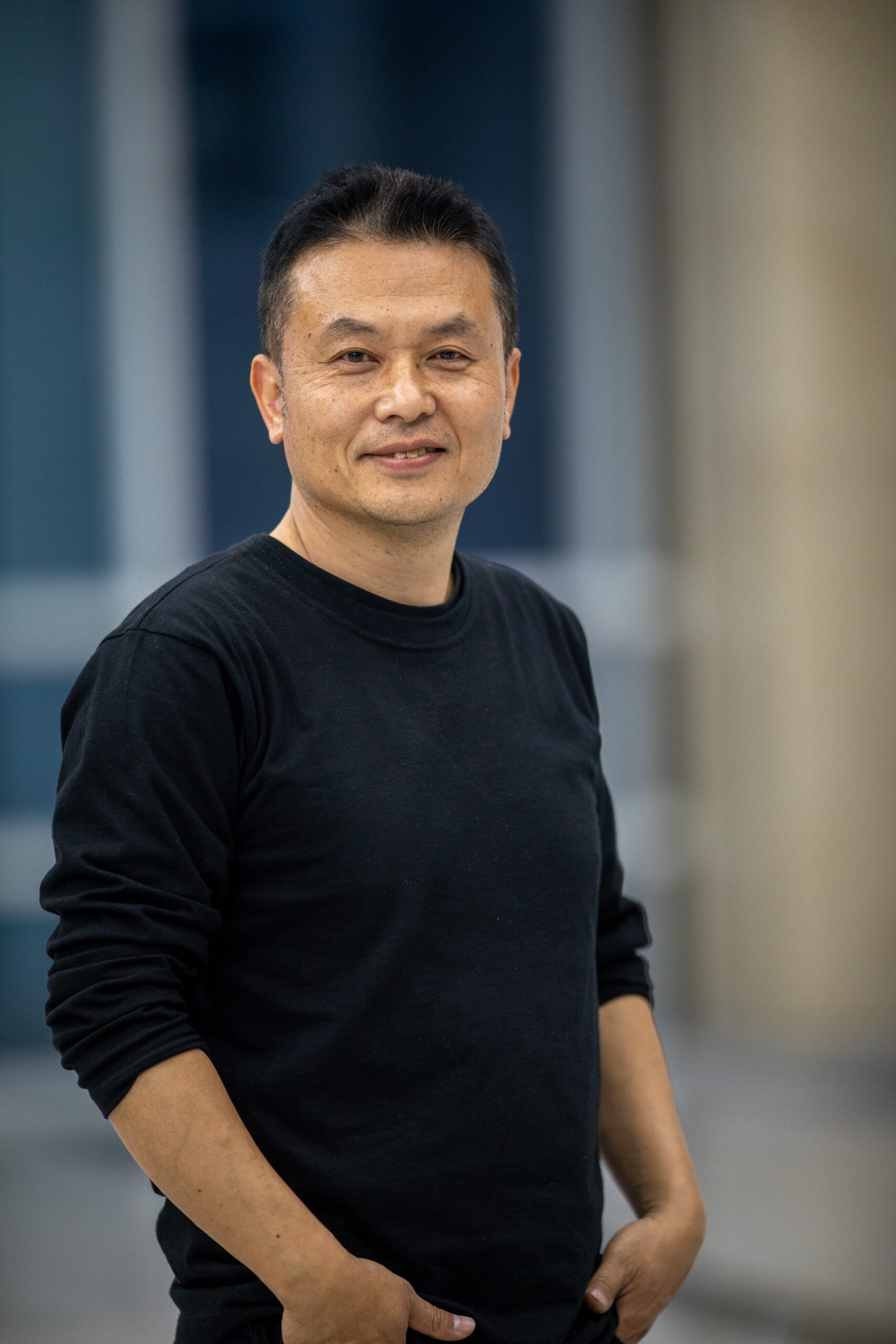
총괄기획자 김진우
포항, 기계와 예술의 경계를 넘어
기계는 단순한 물질적 장치가 아닙니다. 그것은 인간의 노동과 기술이 결합하여 만들어낸 결과물이며, 그 속에는 시간과 생명의 흔적이 깃들어 있습니다. 이번 전시는 포항의 철강 산업을 배경으로, 기계의 유기적 속성과 지속성, 그리고 기술과 예술이 만나는 지점을 탐구합니다.
대한민국 산업화의 심장부였던 포항은 철강을 통해 국가 경제와 도시의 성장을 이끌어온 상징적인 공간입니다. 철은 단순한 재료를 넘어, 도시의 역사와 산업의 기억을 품은 존재입니다.
이번 전시는 이러한 철강의 의미를 뉴미디어아트와 키네틱아트로 풀어내며, 산업과 예술의 관계를 새롭게 확장합니다. 포항이라는 산업도시가 지닌 물질적, 역사적 토대 위에서, 기계와 예술, 관객이 서로 호흡하며 미래적 상상력을 불러일으키는 장을 완성하였습니다.
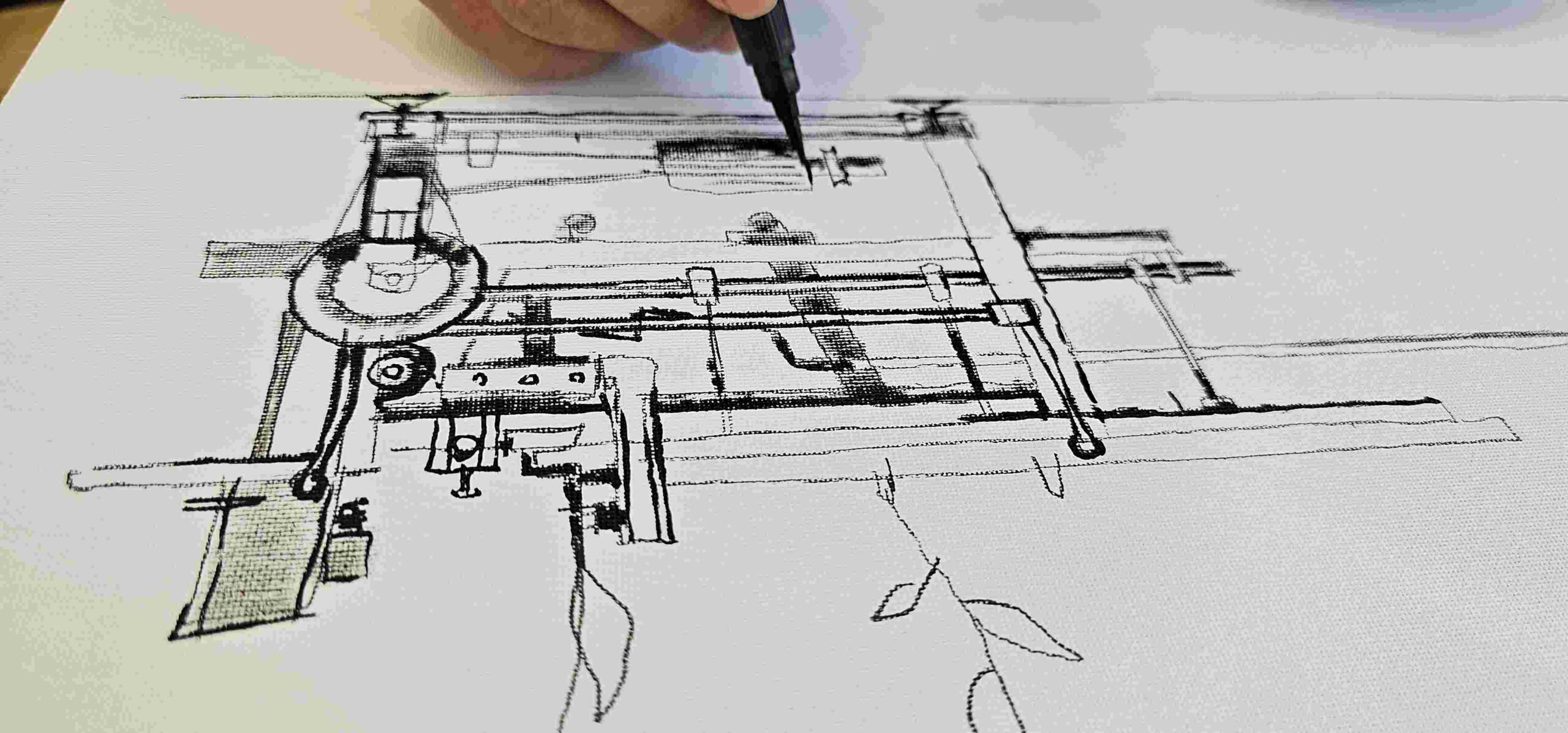
Breathing Machine Drawing, 2025
Brush pen on canvas
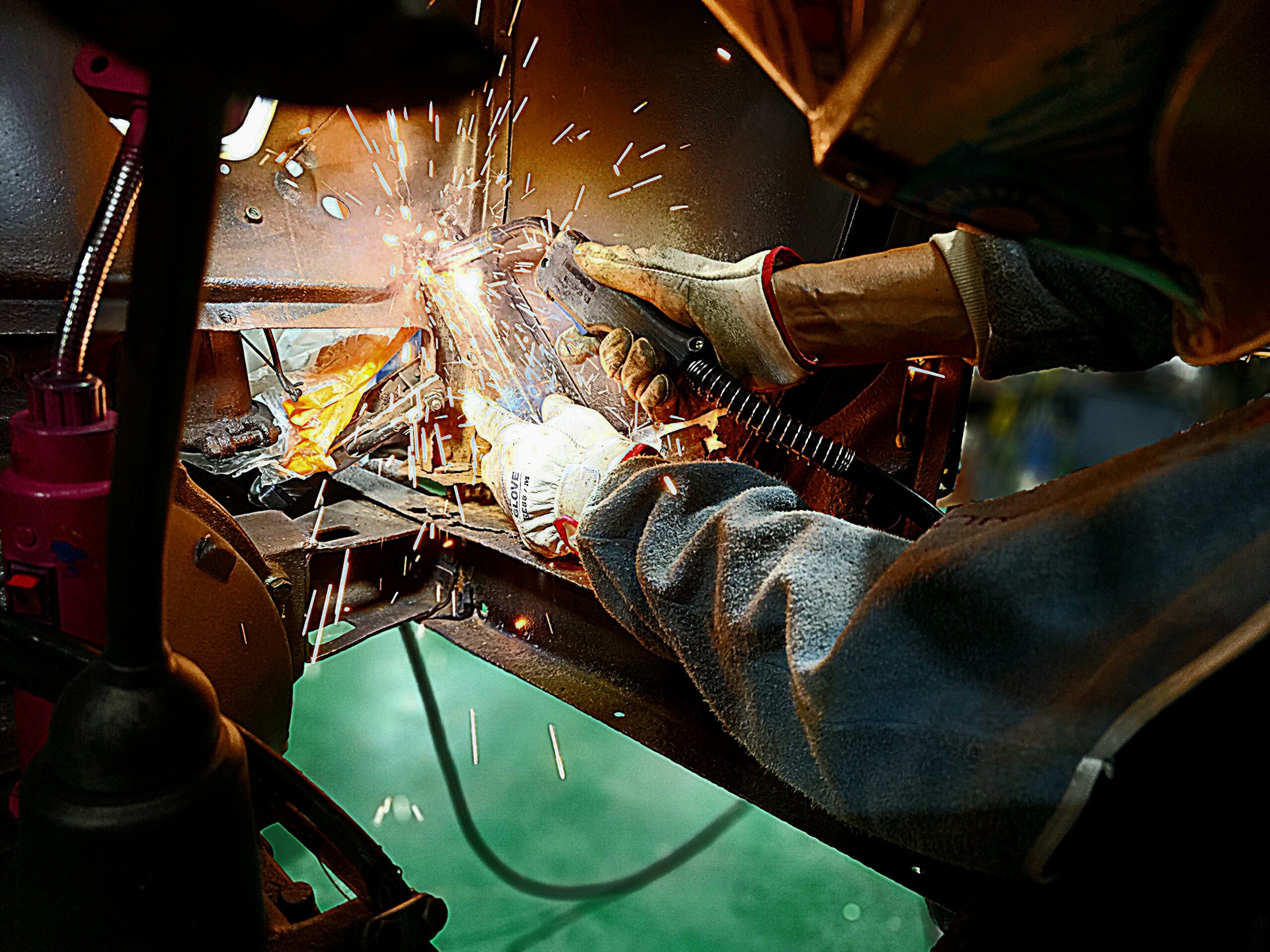
CO₂ Welding, 2025
Photograph
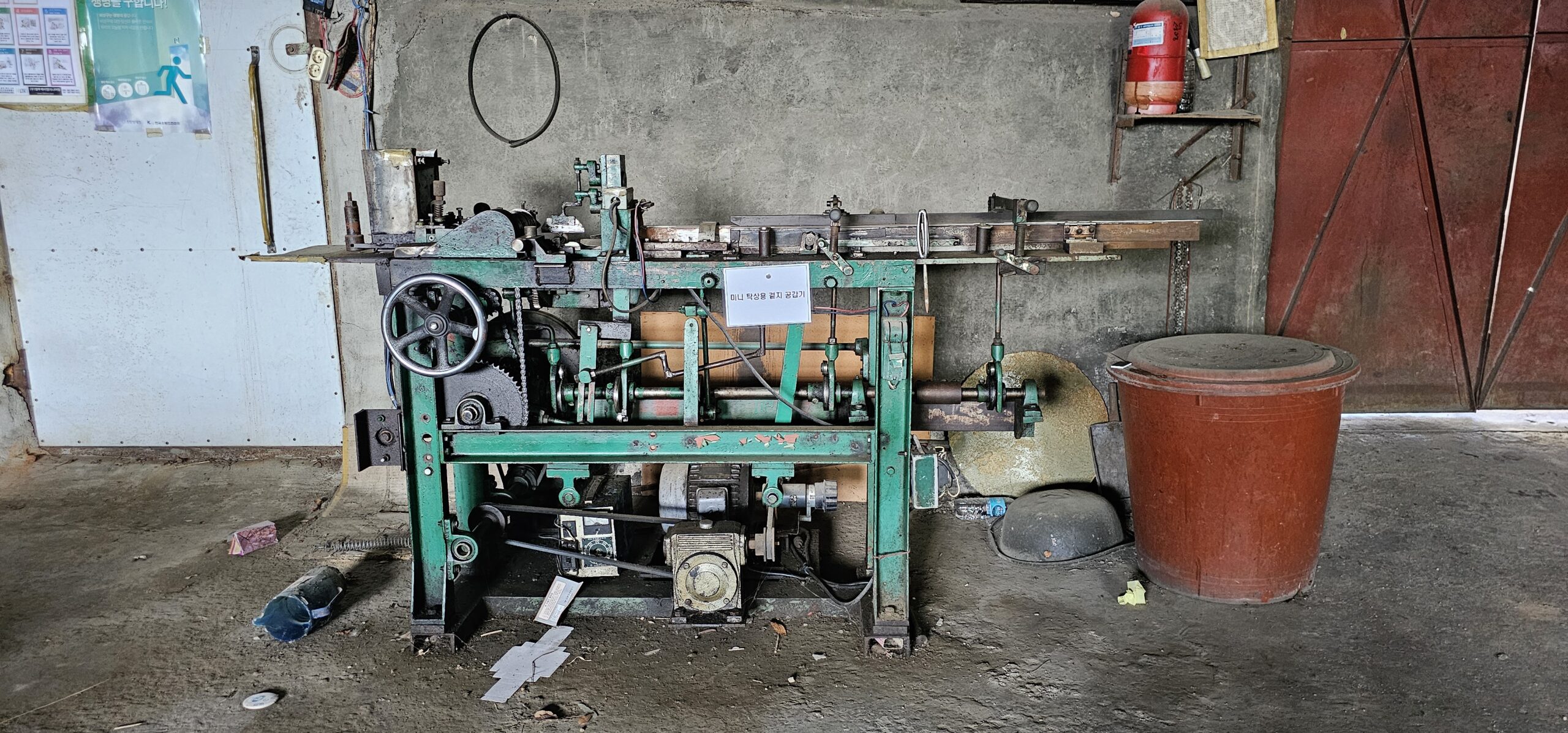
The matchbox factory machine from Uiseong, before its integration into Breathing Machine


